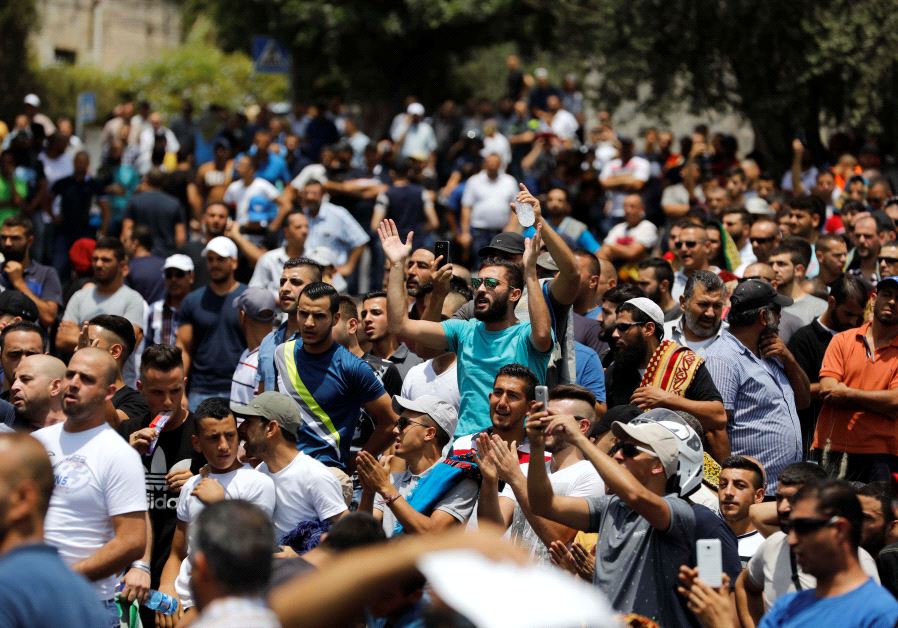Mass protests over Temple Mount carve out unique civil disobedience
Messages of nonviolence coupled with angry chants restrained youth last week, but can Islamic preachers keep the balance?
 Palestinians shout slogans as they protest outside Jerusalem's Old city July 21, 2017.Updated:
Palestinians shout slogans as they protest outside Jerusalem's Old city July 21, 2017.Updated: